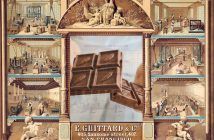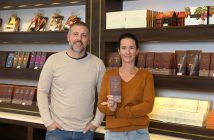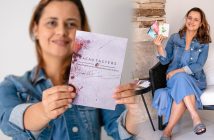Brazilian specialty chocolates that are pure luxury
Chocolat Du Jour is internationally acclaimed for its special chocolates quality, produced exclusively with fine cocoa from Brazil
Despite the French name, Chocolat Du Jour is 100% Brazilian. The translation, for those who do not speak the language, is chocolate of the day, to remember that the product is fresh, made daily and, the fresher it is consumed, the better will be its quality. If, even today, it is a modern idea, imagine how it was when it was conceived, more than 30 years ago, when the company was created by Cláudia Landmann.
Her husband, John Landmann, born in Sweden and raised in Brazil since the age of four, received a gift from a friend who came to visit the country, a box of chocolate truffles. “I fancied it so much that I ate only one bonbon and kept the rest of the box for Cláudia, who loves chocolate”, he says. She tasted it, liked it, and without hesitation, told her husband that she could make an identic candy. He then challenged her. And from that challenge on, Chocolat Du Jour was conceived in 1985.
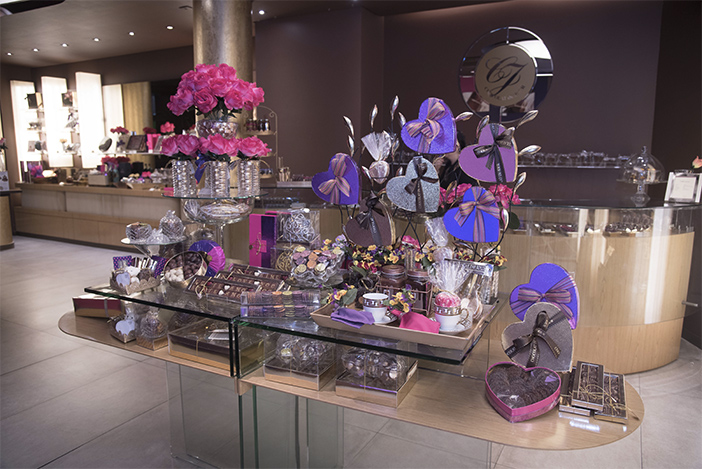
Store – DU JOUR
Currently, the company has about 50 employees and four sophisticated stores located amongst the most noble districts in São Paulo: Iguatemi, Cidade Jardim, Higienópolis and a street store in the Jardins, as well as its website. www.chocolatdujour.com.br. All this glamour is also part of their chocolates packaging, everything is carefully programmed to increase our desire to savor their chocolate.
A lot of research
When she started producing chocolate truffles (bonbons), which she sold to her friends, she bought the ready-to-use, blended chocolate. To improve herself, she went in search of knowledge and went to Belgium, the chocolate mecca, to take a course at the Ceria-Ipiat patisserie school. Her children were small and the production too.

Truffles – DU JOUR
With the help of her husband, she inaugurated in 1987, at Itaim, the first store that also housed a small chocolate factory.
At that time, Cláudia tried to make the bean-to-bar chocolate, but the raw material was not of good quality, and the equipment had to stay on seven days a week, which made the production unfeasible.
“It was only in 2005 that we began to notice that the Brazilian farms were starting to produce good quality cocoa, and this renewed our faith, we were excited”, says Patrícia Landmann, marketing director at Chocolat Du Jour and Cláudia’s daughter. Cláudia, incidentally, has the privilege of working with her other offspring, Manoel, responsible for the financial and her husband, who recently sold his malaria to join the troupe.
They began to search for fine cocoa, which has special aromas, whether fruity, floral, woody, caramel or a pronounced and delicate cocoa aroma.
In 2007, they invested in new equipment to produce the bean-to-bar chocolate, now they became responsible for the roasting, peeling and crushing of the cocoa beans, up to the the conching process, one of the main stages of the chocolate production process (and that was developed by no less that Rodolphe Lindt in 1880).
But this was only possible thanks to the partnership they signed with some farms from the south of Bahia, to make sure that the whole process – from fermentation to drying – was carried out in the most meticulous way possible and that the best possible product arrived at the Chocolat Du Jour’s factory.
And even so, when the cocoa almond arrives at the factory, it passes through countless tests to adjust the roast to each new batch. “Our bean-to-bar chocolate products are produced exclusively with fine Brazilian cocoa”, explains Patricia.

“People said they wanted Belgian chocolate. But Belgium does not have a single cocoa plant! There is a whole movement of appreciation of Brazilian cocoa and, as a result, of our chocolate.” – Claudia
“Just like specialty wine, specialty coffee, specialty olive oil, nowadays, consumers want to know more about the cocoa origin. They want to know where it comes from, how it is grown, how the post-harvest is done and, more recently, they have realized that one of the most important information about the chocolate quality is the percentage of cocoa in the product. The higher, the better it is. In a way, it is our responsibility to educate the Brazilian public so that it learns to consume products of better quality”, explains Patrícia.
Currently, Chocolat Du Jour produces about 20 to 25 tonnes of chocolate per year at its factory located in the Lapa district of São Paulo. The chocolate truffle is its flagship, produced filled with ganache, and different flavors like noir, champagne and the milk. There are also the seasonal fillings like caipirinha, passion fruit, coffee and crispy.
However, its product line is huge: altogether, there are 100 different varieties, at least. “I’m always looking for new flavors, testing new recipes”, said the company founder. And more recently, international awards as well.
In 2015, they were awarded by the Academy of Chocolate, London, with the third place, by Choco Disco, a creation by Claudia, which are small thin chocolate discs, filled with passion fruit and caramel, unusual and difficult harmonization, but one might fall on the knees eating it.
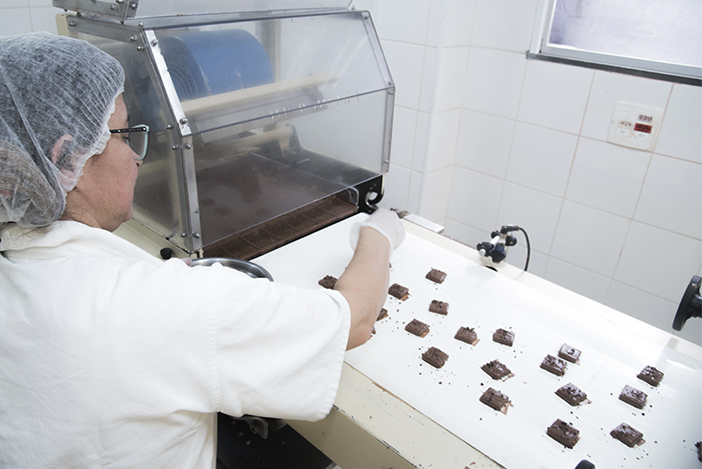
Chocolate Production – DU JOUR
In 2016, Chocolat Du Jour was awarded seven times internationally, with the caramel with Fleur de sel bonbon awarded by both the Academy of Chocolate and the International Chocolate Awards, New York.
Last year, they were again awarded by the Academy of Chocolate, London, with the bean-to-bar chocolate Pratagi, with 45%, 53% and 70% cocoa.
Choco tea
Patricia says that – when they began to produce the bean-to-bar chocolate – the whole shell of the cocoa almond was wasted. It began to bother them, so much waste, and decided that they would reuse the material. They thought about making tea and for that, they invited the best Brazilian expert on the subject, Carla Saueressig.
Also using the nibis, Carla came up with a surprising result: a tea with chocolate aroma and cocoa flavor. “To have this drink is an authentic sensory experience. It has the bitterness of cocoa, but with the chocolate aroma”, he describes.
The result was so good that they won yet another international award. “It was an honor, because our tea was awarded in London, where the drink is taken very seriously”, says Patricia. In addition to exporting it to Japan.
In short, the success for Chocolat Du Jour has never happened by chance. It has a lot of dedication and work behind it. “It’s a passion and, at the same time, an obsession with details, of wanting everything perfect. It is difficult to maintain a standard, but it is this persistence the brand secret”, concludes Patricia.
Partnership with Oriel Balaguer
Since 2004, Chocolat Du Jour has maintained a strong partnership with the Catalan Oriel Balaguer, recognized as the best pastry chef in the world. Balaguer worked seven years with Ferran Adriá, one of the best chefs in the world.
The partnership was extremely important to the brand, he helped them to bring new insights into the preparation of chocolate.
The name does not matter, we are naturally interested in going much further. And this is only possible thanks to our passion for chocolate.
Fine cocoa: know more about it
To produce fine cocoa requires a lot of work. Beginning with the lineage of the seedlings, which must be of good genetics and growing, which in southern Bahia, usually take place under the shade of banana trees and rubber trees or native vegetation. In the harvest, only the ripe fruits are selected, which are left on the ground. They are then picked up manually and organized into batches for passing through the breaking process. Fruits that are damaged or pecked by animals are discarded.

Cocoa – DU JOUR
In the breaking process, the pulp color is another indication of the fruit ripening “point” – green, ripe, past or rusty. Finally, fermentation and drying processes are carried out.
In fine cocoa, fermentation and drying need to be rigorously controlled, both considering the time and temperature as well as hygiene, and should happen naturally.
The cocoa arrives at the Chocolat Du Jour factory still in beans and in small batches and then goes through six stages – roasting, grinding, mixing, refining, conching and tempering. – Only then is he ready to turn into a bar, or a fine filled bonbon or anything else that the chocolatier invents.
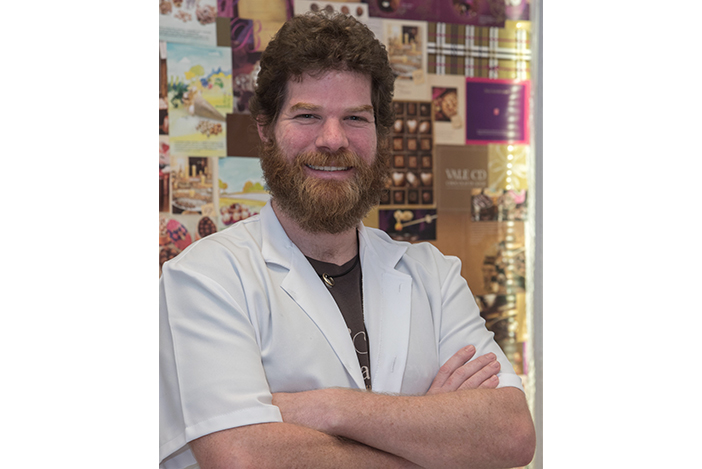
“Despite the economic crisis scenario, we have managed to grow during the last three years. In 2017, we grew 20%. But it’s always difficult because our costs are in dollars.” – Manoel
Theobroma – an 100% Brazilian invention
How about eating your chocolate in the shape of chips? A client and friend from Switzerland showed Claudia a rounded piece, made of wood and iron, made to consume a certain type of cheese in chips. The idea was to adapt the product so that it was possible to consume the chocolate also in the shape of chips. After much research, the Theobroma, the scientific name of cocoa, was born. It comes with a disc of 550 grams of chocolate and costs R$ 985.00.
Stores in São Paulo
Chocolat Du Jour
Flagship Store Jardins
Rua Haddock Lobo, 1421
Shopping Iguatemi
Ground Floor
Avenida Brigadeiro Faria Lima, 2232
Shopping Cidade Jardim
Ground Floor
Avenida Magalhães de Castro, 12,000
Cidade Jardim
Shopping Pátio Higienópolis
Vilaboim Floor
R. Dr. Veiga Filho, 133
Picture and video: Clodoir de Oliveira

